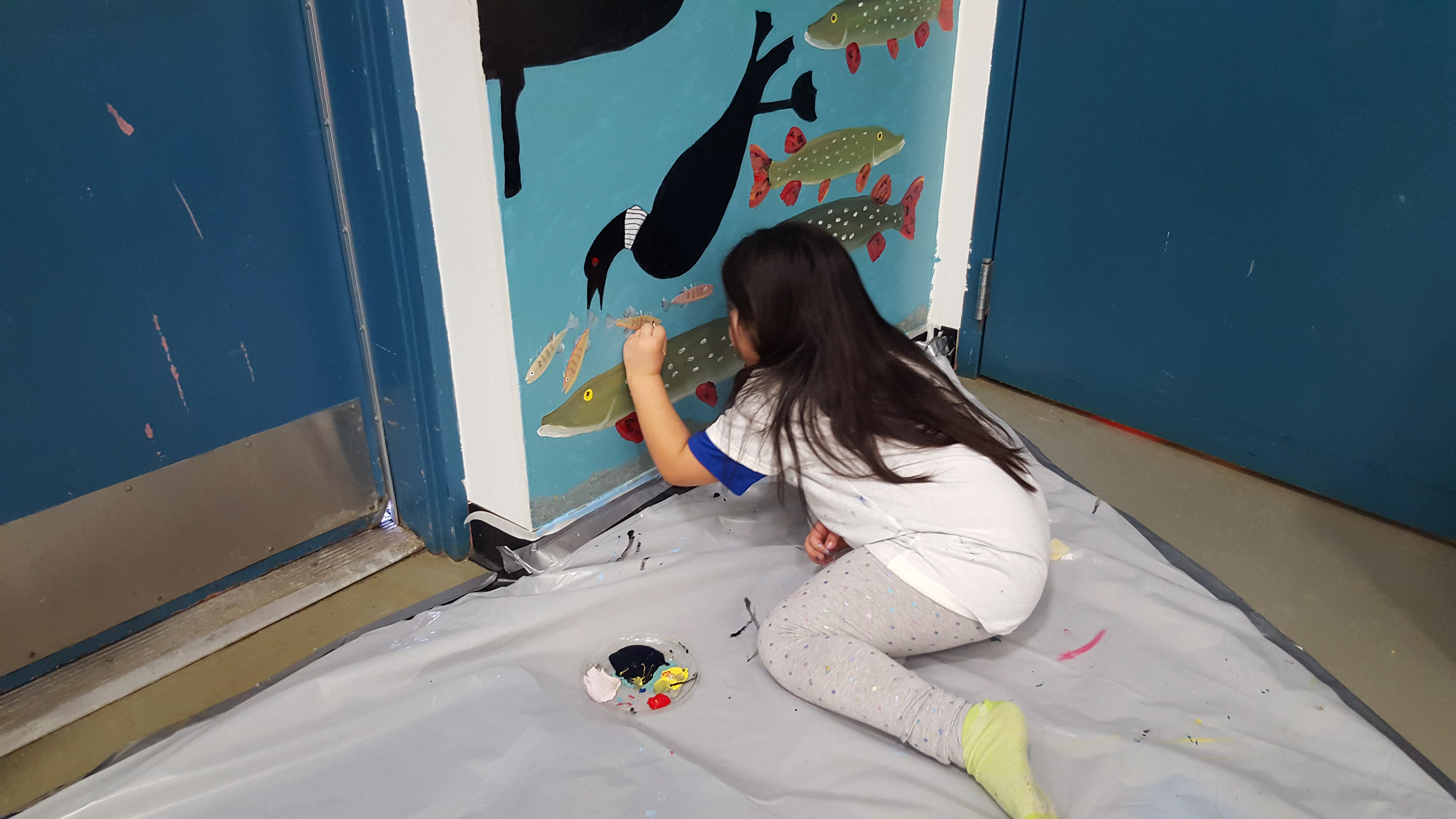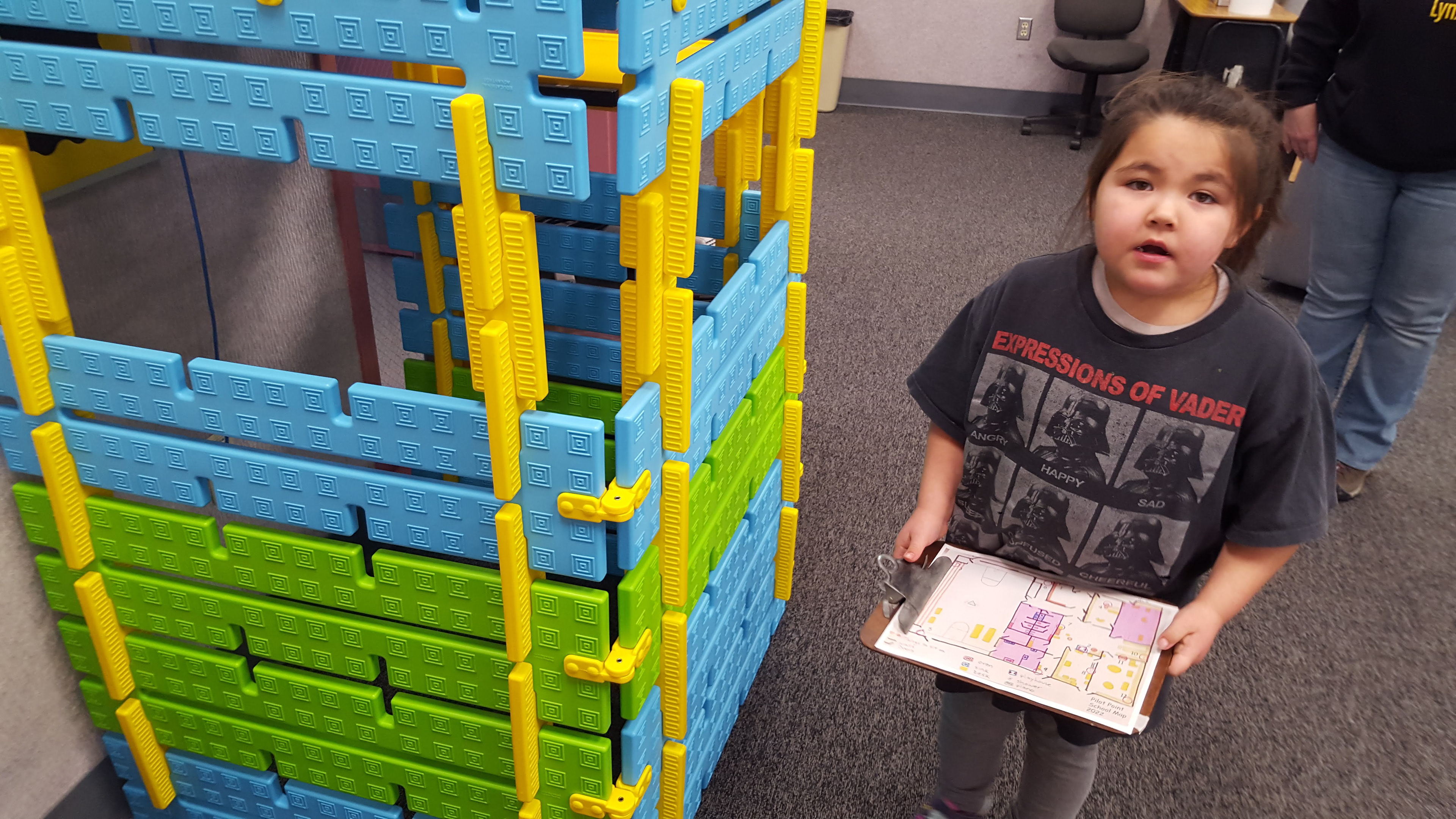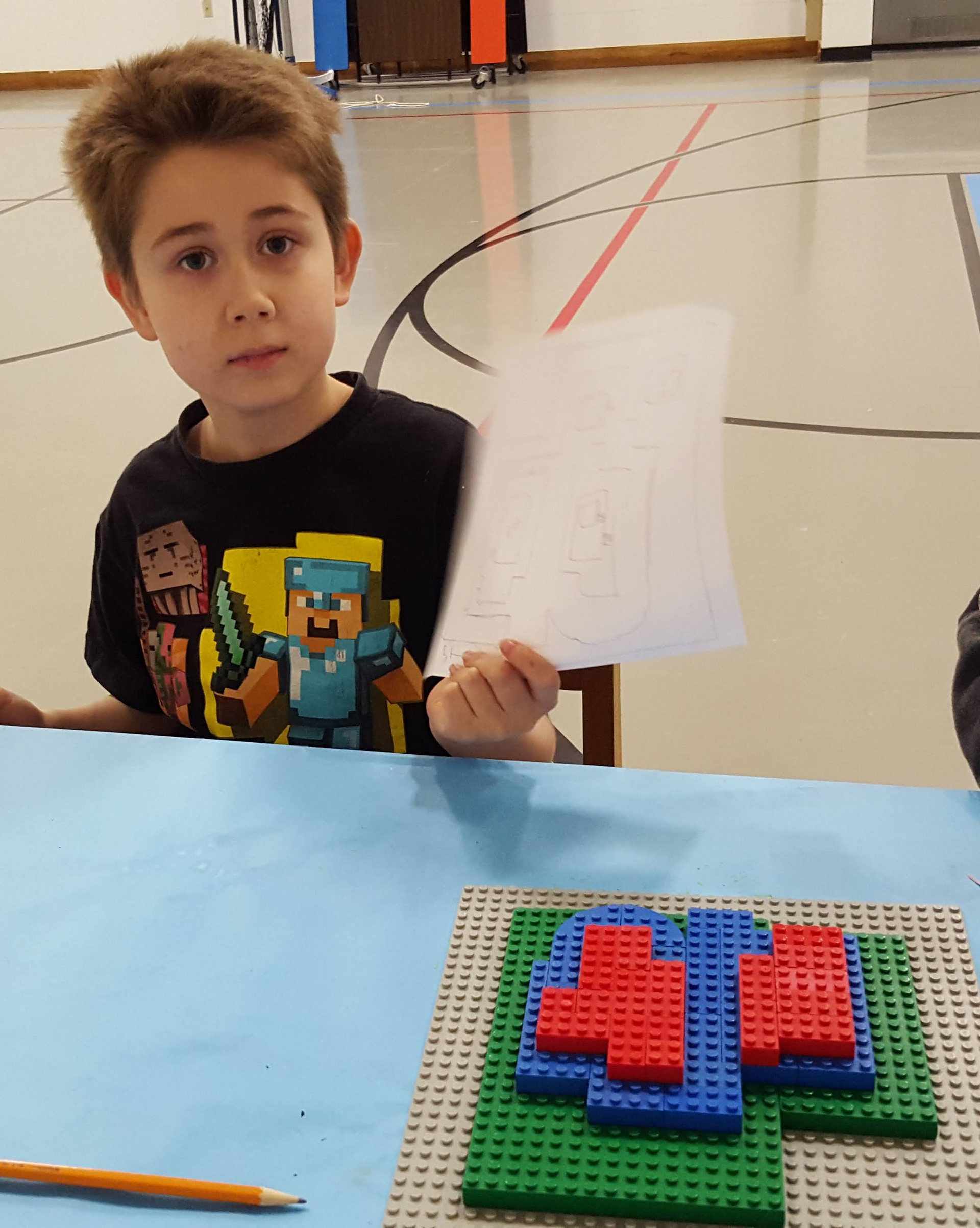Last winter I traveled to Pilot Point, a tiny village located on the Alaska Peninsula. I helped the thirteen students there paint a mural on their gym wall. After I left, we kept up contact via Zoom lessons through the spring and this year I returned for a second in-person week of art and adventure.
Before I left for Pilot Point, I used Adobe Illustrator to create a design for an extension of our mural in the gym. The background layer is a photo of the gymnasium including the farthest righthand edge of last year's mural with ravens and wolves. This year the elementary school teacher suggested I incorporate loons into the mural. I wanted to work out a way to show them above and below water while not violating the horizon of our previous mural! I added some sockeye salmon to keep with the local wildlife theme.
The night before my classes started, I mixed up some sky blue and gave our whole workspace a fresh undercoat of paint.
Monday morning turned out to be an in service time, so I traced on the tussocks and waterline in preparation for the students to start painting. The three students who showed up for class later in the morning painted the half-circles of tundra between bouts of Predator/Prey tag. They used stamps, stencils, brushes and Q-tips to make concentric patterns on the tussocks. In the afternoon, two high school girls helped to trace on the alder bushes and loons and gave the birds a base coat of black.
Three hours is a long stretch for aspiring muralists to stay on task, so this year I alternated our painting sessions with navigation exercises. The first day I used a simple grid of dots to make mini-orienteering courses which would help the students learn to keep their maps oriented. That means they needed to rotate the map as they turned their bodies, keeping the symbols on the map facing the same direction as the features in the real world as they navigated their way through the series of pink control points. I made duplicates of each course so a second student could observe from a neutral position. In this way the students got two perspectives on how to solve the puzzle.
Over the following two days, the mural saw a lot of progress. The black loons were joined by pike and stickleback, alder branches and more tussock patterns. I taught the younger students step-by-step how to paint each of the fish species, and they even made pictures to take home with them.

blend colors

try using your opposite hand

work carefully

make multiples

add details
The navigation games became a regular part of our daily activities. Both the younger and older students seemed to enjoy challenging themselves to explore their world with specific intention. Each night I spent hours making maps and designing courses to use in the following day's classes. We started with a simple map of the gym and worked our way up to the interior of the whole school. I set out colored dots as control markers and the students had to keep track of which color they found at each numbered station.

find your starting point

orient the map to the real world

look for features in the world represented by symbols on the map

check off features as you go past them

keep track of what color dots you found at each point
Eventually we graduated to the exterior of the school and a new map showing the playground, teachers' housing and surrounding vegetation. New distractions threatened to set us off track. Dogs jumped and barked around us, and occasionally even moved our control markers. Snowy trails turned into ice-lined puddles when warmer weather set in. Wind blew our maps off into the alders. But none of that stopped the youngest kids who were always happy to get dressed up and head outside.
They learned to use the key on the map to check for symbols they didn't recognize, and became quite good at keeping the map oriented and following "handrail" features like fences, vegetation boundaries and sides of buildings. Some of them even tried to re-do courses by memory like the protagonist in my new navigation novel. https://jenjolliff.com/fogrunner

Follow "handrail" features

Avoid distractions and stay focussed

Check to be sure the control dot is on the correct feature

Reorient yourself before navigating to the next control
Of course we didn't completely forget about our art project. The spring side of the alder bushes needed some leaves and the large, dark cloud was calling for some rain, so we cut and carved block stamps out of pink rubber and set to work.

HS teacher, Robert Kirchner carves

leaf stamp prints

Teacher's Aide, Michael helps stamp
To compliment the details on last year's ravens, we gave the loons some fancy patterns too.


Back on the orienteering side, I taught the students about reading topographic lines on a map by having them build tiered Lego mountains and then draw them from the side as profiles and from overhead as contours.
We practiced matching up several different landscapes to their contour line representations and learned the names of topographic features like saddles, hilltops, depressions and ridges.
I created a topographic map of the lakes and hills surrounding the school and set up a more extensive orienteering course for the High School students which tested all of their navigating skills.


By Friday the mural was done. Last year's autumn wolves and ravens were joined by four pairs of loons, five chicks, a dozen pike and twenty stickleback frolicking in an early summer rainstorm. I'd like to think we'd get a chance to paint the other seasons, that grants like the one which paid for this project would be available in the future, that shrinking schools like this would continue to be able to keep their doors open, find good teachers and provide opportunities for their students. But none of that is certain.
I hope the skills and enthusiasm I've been able to share for both art and map reading will help these kids find their way to a brighter future. Whether their futures lie in Pilot Point, in Dillingham, in Anchorage, or somewhere else far away, I hope they'll always remember that there's more than one route to their destinies and I hope they choose theirs well.